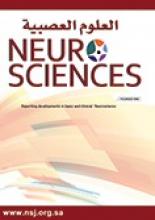Abstract
OBJECTIVE: To assess and evaluate the accuracy of individual types of evoked motor responses (EMRs) for prediction of successful surgical anesthesia following peripheral nerve stimulator (PNS) assisted supraclavicular block.
METHODS: A prospective study was carried out over a period of one and half years from August 2004 to January 2006, at J. N. Medical College, Aligarh Muslim University, Aligarh, India, in 60 patients who underwent various elective operative procedures on the upper limb. Any of the EMR, such as forearm flexion or extension, carpal flexion, or extension, prono-supination, or finger flexion, at a definite current of 0.25 mA for 2 ms was taken as an end point for prediction of successful block, and a local anesthetic solution (0.375% Bupivacaine, 30 ml) was administered at that level.
RESULTS: Complete surgical anesthesia was observed in those cases where EMR included: flexion of only second and third fingers (n=15/15) or flexion of all 4 fingers with thumb opposition (n=14/14) or uncommon flexion of all 4 fingers without movement of any other joint of the upper limb (n=2/2), suggesting a sensitivity of 100%. However, thumb opposition to the tip of the flexed little finger revealed a success rate of only 83% (n=5/6), and other EMRs were followed by high rates of inadequate surgical anesthesia or total failure.
CONCLUSION: Specific EMR of flexion of second and third fingers, or all the 4 fingers are reliable predictors of complete surgical anesthesia following PNS assisted single injection supraclavicular nerve block with no incidence of pneumothorax and nerve damage.
- Copyright: © Neurosciences
Neurosciences is an Open Access journal and articles published are distributed under the terms of the Creative Commons Attribution-NonCommercial License (CC BY-NC). Readers may copy, distribute, and display the work for non-commercial purposes with the proper citation of the original work.






